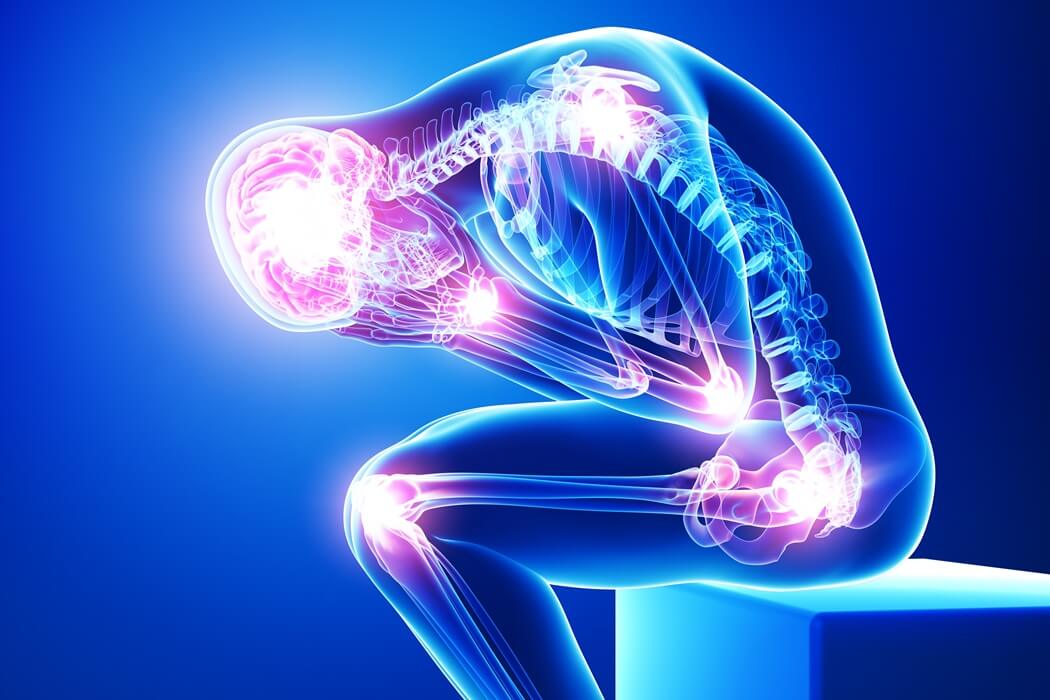
Chronic Pain
Chronic pain is a condition that affects people with debilitating symptoms that affect everyday life. Unlike acute pain, which is temporary, chronic pain persists for weeks, months, or even years. For those affected, it can impact every facet of life, including work and relationships. Understanding this condition and its wide-reaching effects may help you take steps to manage it.
What Is Chronic Pain?
Chronic pain is defined as pain that lasts longer than six months, often beyond the point of expected healing. It may feel like a constant ache, sharp pain, or burning sensation. Unlike acute pain, which signals an immediate problem that the body can resolve, this pain sometimes continues without a clear cause.
This form of pain can be present in one area, such as the back, or it can spread across multiple regions of the body. It may be accompanied by fatigue, poor sleep, and mental tension, further exacerbating its impact on daily life. Consulting a doctor helps with diagnosis and treatment.
What Causes It?
The causes of chronic pain vary widely. For some, it stems from an identifiable injury or condition, such as arthritis, migraines, or nerve damage. For others, the origins are less clear, with the body seemingly sending pain signals without any direct injury or disease present. Conditions like fibromyalgia fall into this category.
This pain can also be influenced by psychological and physical factors, such as tension, prolonged inactivity, or previous injuries. Other causes include alcoholism, chemotherapy, and diabetes. These underlying causes make it beneficial to identify patterns in the pain experience to explore potential treatment options.
What Are the Different Types?
Chronic pain takes many forms, and each type presents its own set of challenges. Neuropathic pain originates from nerve damage or dysfunction, leading to burning or stabbing sensations. Musculoskeletal pain includes conditions like arthritis, back pain, or neck pain, often arising from issues with muscles, bones, or joints.
Other types involve headaches, abdominal pain, or widespread discomfort associated with conditions like fibromyalgia. Additional conditions that cause it are nerve pain, myofascial pain syndrome, and complex regional pain syndrome. While each individual’s experience is unique, people may report overlapping pain across multiple areas of the body, making it even more disruptive.
How Does It Impact Work and Relationships?
Chronic pain can interfere with work by limiting both productivity and focus. Individuals may find it difficult to maintain regular attendance, keep up with deadlines, or focus during daily tasks. Sleeplessness and brain fog often accompany this pain, creating additional professional hurdles.
Relationships also feel the strain as individuals struggle to balance the demands of their condition with personal connections. Friends or loved ones may not fully understand the depth of pain, leading to isolation and tension. Communication challenges can arise, and social activities may be limited due to physical discomfort or exhaustion.
What Treatment Options Are Available?
Addressing chronic pain often requires a multi-faceted approach. Medical options might include medications, orthopedic care, or interventions like nerve blocks. Depending on the condition, your treatment may include dorsal root ganglion stimulation, spinal cord stimulation, kyphoplasty, facet injections, steroid injections, radiofrequency ablation, and viscosupplementation. A consultation with a specialist helps determine which treatment is right for you.
Don’t Let Pain Interfere With Your Life
Learning about the causes and approaches to managing your chronic condition is a helpful first step to finding relief. If you believe persistent pain is holding you back in work or relationships, take the next step today. Connect with healthcare professionals who can guide you toward strategies to minimize its impact and improve your overall well-being.
Discover the latest news and updates on The Blog Verge






